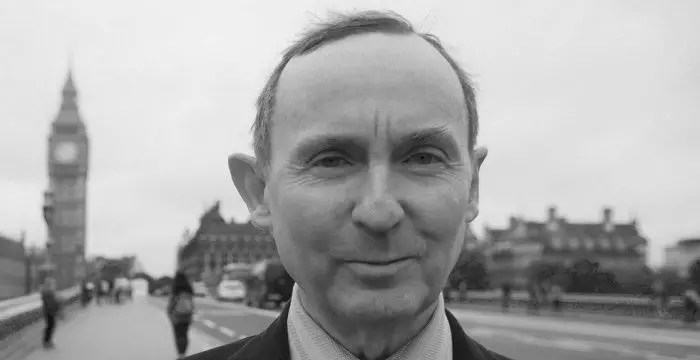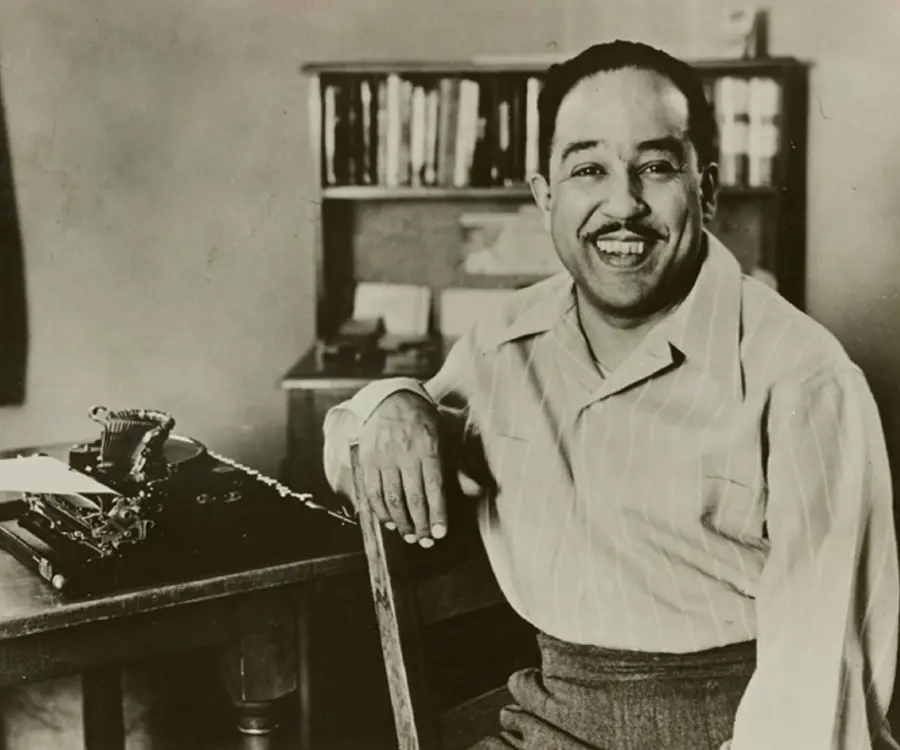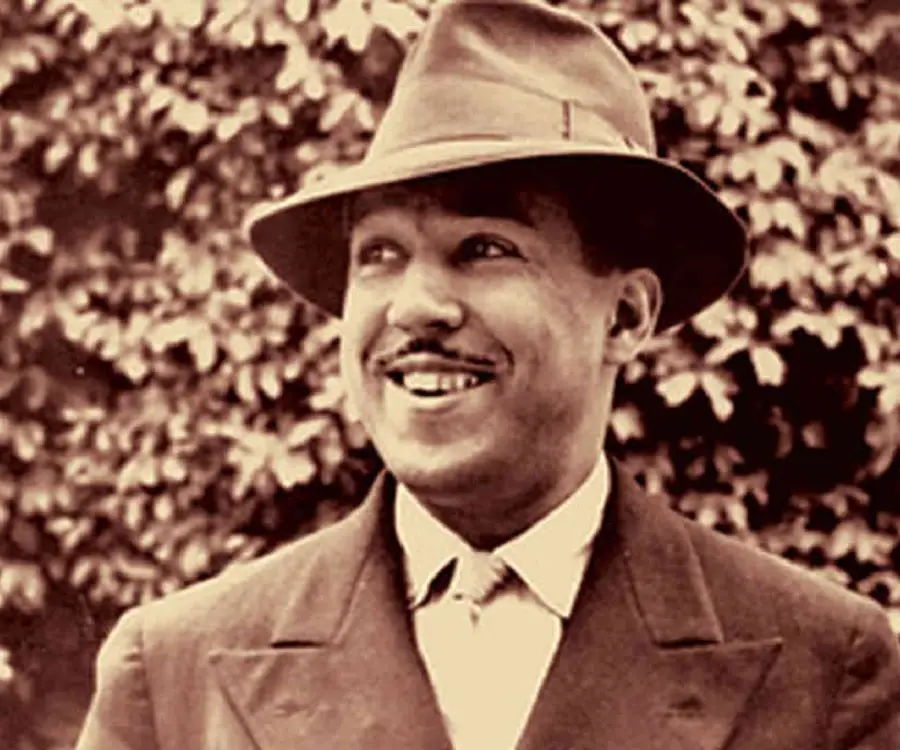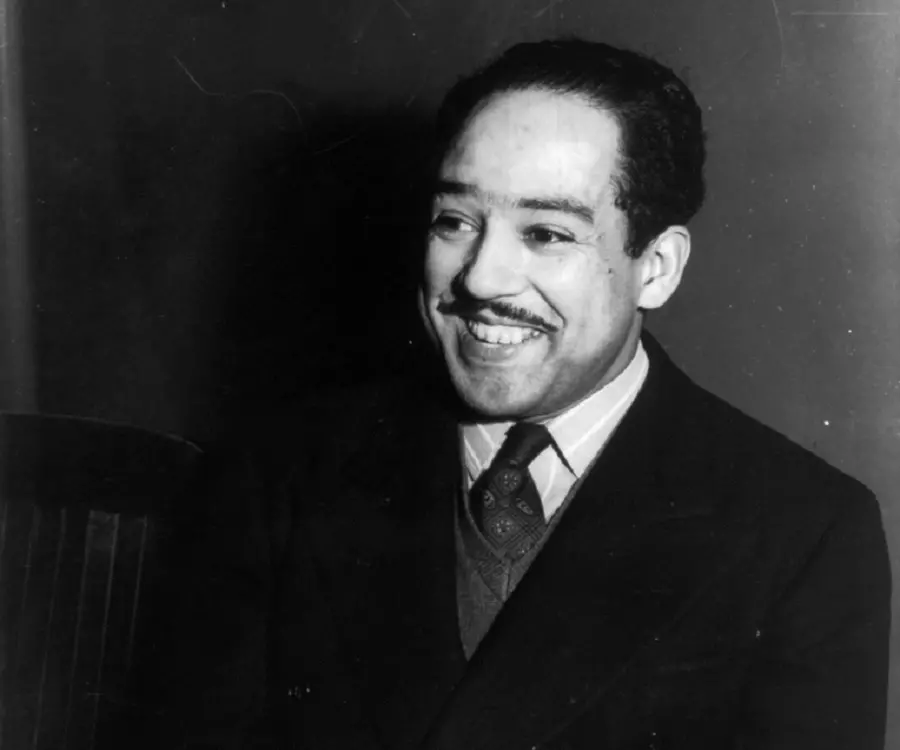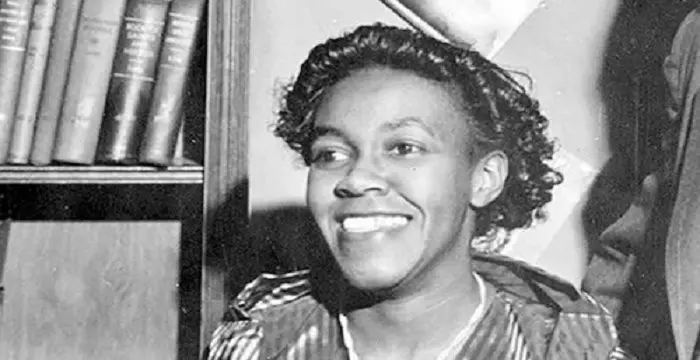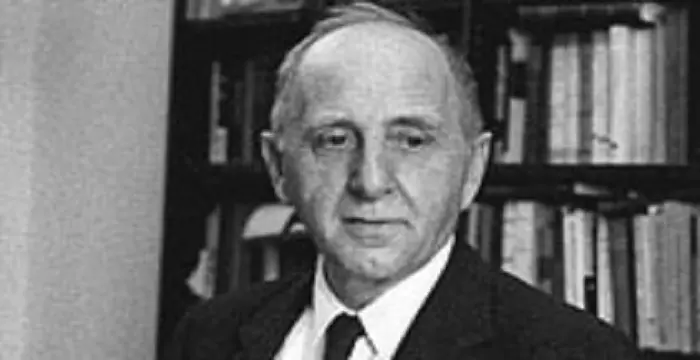
Langston Hughes - Columnist, Timeline and Family
Langston Hughes's Personal Details
Langston Hughes was an African-American poet who made significant contributions to the Harlem Renaissance
| Information | Detail |
|---|---|
| Birthday | February 1, 1902 |
| Died on | May 22, 1967 |
| Nationality | American |
| Famous | African American Authors, African Americans, Black Authors, Black Poets, Columbia University, Writers, Poets, Novelists, Playwrights, Columnist |
| City/State | Missouri |
| Universities |
|
| Notable Alumnis |
|
| Birth Place | Joplin, Missouri, United States |
| Political Ideology | Communism |
| Gender | Male |
| Father | James Nathaniel Hughes |
| Mother | Carrie (Caroline) Mercer Langston |
| Sun Sign | Aquarius |
| Born in | Joplin, Missouri, United States |
| Famous as | Poet, Novelist, Playwright, & Columnist |
| Died at Age | 65 |
// Famous Columnist
Meghan McCain
Meghan McCain is a well-known American columnist, blogger, author, radio personality, and TV host. Check out this biography to know more about her childhood, family, personal life, achievements, etc.
A. N. Wilson
A. N. Wilson is a writer and columnist who is known for his novels, critical biographies and religious views. Check out this article to know more about his life.
Maureen Dowd
Maureen Dowd is a well known American columnist and best-selling author. This biography offers detailed information about her childhood, career, works, life, achievements and timeline.
Langston Hughes's photo
Who is Langston Hughes?
James Mercer Langston Hughes is remembered as one of the greatest contributorsto the artistic realm of the Harlem Renaissance. A poet and writer by profession, Hughes was an African-American. Through his exquisite literary compositions, he told stories of the sufferings and the life of the black people. During the 1920s when writers chose to stream their content, making their compositions worthy of only the highly literate, Hughes’ writings came as an elementary relief to those who could just about read and didn’t possess opulent knowledge. His poetry was straight forward and often meant for the black community. He had a particular penchant for jazz music. In fact, he created a brand new genre of American poetry that was later called jazz poetry. Gaining support for his work, he went on to write short stories, plays and columns. It was his dauntless ability to express the black life with all its honesty that won him plenty of admiration later in his career. The columns he wrote largely uplifted the morale of the blacks who were subjugated to racism. His famous work ‘When Harlem was in Vogue’ received plaudits from sundry writers.
// Famous Black Poets
Gwendolyn Brooks
Gwendolyn Brooks was the first African-American poet to win the Pulitzer Prize. Read on to know more about her profile, childhood, life and timeline.
Maya Angelou
Maya Angelou was a famous writer, activist, singer, and actor, known best for her autobiography, ‘I Know Why the Caged Bird Sings’. Read on for detailed information about his childhood, profile, career and timeline
James Baldwin
James Baldwin was an American writer and social critic, best known for his debut novel, ‘Go Tell It on the Mountain’. This biography of James Baldwin provides detailed information about his childhood, life, achievements, works & timeline
Childhood & Early Life
James Hughes was born on 1 February 1902 in Joplin, Missouri, to Native Americans with Afro-American ancestry. His mother, Carrie Langston was a school teacher and his father was James Nathaniel Hughes.
Shortly after his birth, his father abandoned their family and later filed for divorce. Seeking desperately to acquire a job, Carrie travelled to and fro for better opportunities.
Carrie’s mother took over the responsibility of bringing up little James Hughes in Kansas. However, when old age caught up with her, she couldn’t take good care of him and when he was thirteen his grandmother expired.
After the death of his grandmother, he moved to Ohio, where he finally lived with his mother. As a young boy, Hughes felt tremendously insecure as the love he sought from both parents was never received by him.
In high school, he learned about various authors and poets; in one such lesson he came across the works of Carl Sandburg and Walt Whitman who inspired his flair for writing.
He regularly wrote poetry for his school’s literary magazine and gradually his drive for writing poems and short stories developed. He also submitted his poetry to other dailies that rejected his work.
During this phase, his mother and step-father moved to Chicago as his step-father had procured a better job. But Hughes stayed back in Ohio to complete his high school education.
His father James Nathaniel stepped into his life once again and offered to take him home to Mexico for the summer vacation. He agreed to live with his father, in want of knowing him better but their bond couldn’t thrive.
After the summer, he returned to Cleveland, Ohio, to complete his high school. By then, his poetry skills had started getting even better. His teachers commended his writings and encouraged him to study at Columbia University.
The Rise of a Harlem Poet
On concluding his high school education, Langston Hughes took a train back to his father in Mexico in 1920, hoping that his father would identify his talent and provide for his further education.
It was in the course of this journey that he wrote the legendary poem ‘The Negro Speaks of Rivers’. On reaching Mexico, his father was astounded to hear of his son’s literary preference as he had wanted his son to study engineering instead.
In retaliation, Hughes sent a few of his poems that were published in ‘The Crisis’ magazine. On reading his son’s published poems, James Nathaniel had a change of heart and he paid for his son’s education at Columbia University in 1921.
At the university, he was greatly influenced by the Harlem Renaissance, which contributed greatly to the revival of Afro-American literature and art.
He was more inclined towards the movement than his syllabi. Though he maintained a consistently good performance at the university, owing to his growing interest in social activities he left his studies midway in 1922.
He took up odd jobs for survival. He then served as a marine steward on ‘S.S. Malone’ that frequented West Africa and Spain. For a brief span after his marine expedition he stayed in Paris, all this while never ceasing to write and publish poetry.
In 1925 he became the personal assistant of the renowned historian Carter G. Woodson at the Association for the Study of African American Life and History. Work as an assistant proved to be difficult for him as he had to devote plenty of his time to the requirements of Carter.
Hence, he resigned from his post and focused on writing poetry, subsequently working as a busboy at the local Park hotel to earn his livelihood. Fortune brought him to chance upon the poet Vachel Lindsay who supported his ventures as a poet.
Around this time he entered Lincoln University on a scholarship and graduated with a B.A. degree in 1929 and travelled back to New York to join the Harlem Movement.
Finding Literary Success & Political Activism
Langston Hughes published his first novel. ‘Not without Laughter’ in 1930;his novel portrayed the life of a black American who juggles between the juxtaposing attitudes of parents with dissimilar values.
The success of his novel made him adamant to pursue writing as a career. Around this time, he often travelled to other countries including the Soviet Union. After he returned from the Soviet Union, he was flabbergasted at the racial discrimination rife in the States.
His ideals moved politically to the left wing and thus, he wrote ‘The Ways of White Folks’ in 1934. In 1937, for his play ‘Don’t You Want to Be Free?’ he built the Harlem Suitcase Theatre.
After the Second World War and its devastating consequences, his rigid political ideals slowly began to sober. In 1940, he wrote a humorous autobiography, titled ‘The Big Sea’, in which he expressed no political ideology.
Yet, he disagreed with any form of racial discrimination and socially condemned it through his books ‘Shakespeare of Harlem’ in 1942 and ‘Jim Crows Last Stand’, 1943.
He also edited African American books in the last years of his career. In addition, he had written almost 20 plays and majorly translated the works of Federico Lorca and Gabriela Mistral.
The Columnist
James Hughes wrote a weekly column in the reputed ‘Chicago Defender’ for twenty years. The column featured the fictional character of Jesse B Semple or ‘Simple’ who made commentary pertaining mainly to racism.
‘Simple’ portrayed an eloquent spokesman for African Americans. Subjects debated upon by ‘Simple’ in the column were diverse and intense.
Hughes compiled a collection that was edited and titled ‘Simple Speaks His Mind’ in 1950 that containedthe character’s musings which werethought-provoking and witty at the same time.
Major Works
Langston Hughes produced some of the finest works of his time, such as the popular play ‘Mulatto’ in 1935, that was centred around mixed races and a sense of parental rejection.
He cleverly weaved social discrimination into comedies such as ‘Little Ham’ of 1936 and the ‘Emperor of Haiti’ in the same year.
It was in the verses of ‘Montage of a Dream’ that he looped his love for jazz music poetry. The verses were discordant and thus created a new avenue for poetry.
The second volume of his autobiography written in 1956 is called ‘I Wonder as I Wander’. It was a meandering and effortless portrayal of life through his eyes that won huge recognition.
He also wrote stories for children on jazz, West Indies, and Africa. His most famous children’s work was a jointly written book by Arna Bontemps and himself, titled ‘Popo and Fifina’ in 1932.
In 1960 he wrote a poem that ran into several pages called ‘Ask Your Mama’ that bore great significance to black life and culture. His last book ‘The Panther and the Lash’ was posthumously published in 1967.
Awards & Achievements
In 1954, he received the Anisfield-Wolf Award for a book that incorporated measures to bind diverse communities and races.
As a result of his umpteen recordings and music commentary of his own poetries he was elected to both – the National Institute of Arts and Letters and Academy of Arts and Sciences.
Hughes was awarded the ‘Spingarn Medal’ by NAACP in the category of most distinguished African American in 1960.
In 1963 he was awarded an honorary doctorate degree by the Howard University.
Towards the fag end of his career he was named the ‘Poet Laureate of the Negro Race’, as he was the most original in representing the Negro race.
Personal Life & Legacy
James Hughes had one romantic involvement in his lifetime with Anne Marie Coussey, but owing to his lack of interest, the relation didn’t last long. In fact, he was majorly known to be asexual yet many historians suggest that his autobiography subtly hints at him being a homosexual.
The world saw the last of Hughes on 22 May 1967. He died in New York at the age of 65. His death resulted from complications that emerged after an abdominal surgery conducted to eradicate prostate cancer.
His body was burnt and his ashes have been placed in the centre of the foyer at Schomburg Center for Research in Black Culture in Harlem.
His home at 20 East 127th Street in Harlem has been deemed a landmark by New York Preservation Commission.
// Famous Columbia University
Helen Morris
Helen Morris is a former book editor, TV producer and the wife of Academy Award winning director Martin Scorsese. Check out this biography to know about her birthday, childhood, family life, achievements and fun facts about her.
Simon Kuznets
Simon Kuznets was a noted Russian-American economist, statistician, demographer, and economic historian. Check out this biography to know about his childhood, family life, achievements and other facts related to his life.
Anna Paquin
Anna Paquin is a Kiwi film, theatre and television actress known for her roles in movies like ‘The Piano’, ‘Fly Away Home’, and ‘X-Men. This biography provides detailed information about her childhood, life, achievements, works & timeline.
Langston Hughes's awards
| Year | Name | Award |
|---|---|---|
Other | ||
| 0 | Hughes was awarded a felowship from the Rosenwald Fund. | |
| 0 | Lincoln University awarded Hughes an honorary Litt.D. | |
| 0 | Hughes won the Anisfield-Wolf Book Award. | |
| 0 | the NAACP awarded Hughes the Spingarn Medal | |
| 0 | Howard University awarded Hughes an honorary doctorate. | |
| 0 | Western Reserve University awarded Hughes an honorary Litt.D. | |
| 0 | The first Langston Hughes Medal was awarded by the City College of New York. | |
| 0 | Hughes won the Witter Bynner Undergraduate Poetry Prize. | |
| 0 | Hughes was awarded a Guggenheim Fellowship | |
| 0 | which allowed him to travel to Spain and Russia. | |
Langston Hughes biography timelines
- // 1st Feb 1902James Hughes was born on 1 February 1902 in Joplin, Missouri, to Native Americans with Afro-American ancestry. His mother, Carrie Langston was a school teacher and his father was James Nathaniel Hughes.
- // 1920On concluding his high school education, Langston Hughes took a train back to his father in Mexico in 1920, hoping that his father would identify his talent and provide for his further education.
- // 1922He was more inclined towards the movement than his syllabi. Though he maintained a consistently good performance at the university, owing to his growing interest in social activities he left his studies midway in 1922.
- // 1925In 1925 he became the personal assistant of the renowned historian Carter G. Woodson at the Association for the Study of African American Life and History. Work as an assistant proved to be difficult for him as he had to devote plenty of his time to the requirements of Carter.
- // 1929Around this time he entered Lincoln University on a scholarship and graduated with a B.A. degree in 1929 and travelled back to New York to join the Harlem Movement.
- // 1930Langston Hughes published his first novel. ‘Not without Laughter’ in 1930;his novel portrayed the life of a black American who juggles between the juxtaposing attitudes of parents with dissimilar values.
- // 1932He also wrote stories for children on jazz, West Indies, and Africa. His most famous children’s work was a jointly written book by Arna Bontemps and himself, titled ‘Popo and Fifina’ in 1932.
- // 1934 To 1937His ideals moved politically to the left wing and thus, he wrote ‘The Ways of White Folks’ in 1934. In 1937, for his play ‘Don’t You Want to Be Free?’ he built the Harlem Suitcase Theatre.
- // 1935Langston Hughes produced some of the finest works of his time, such as the popular play ‘Mulatto’ in 1935, that was centred around mixed races and a sense of parental rejection.
- // 1942 To 1943Yet, he disagreed with any form of racial discrimination and socially condemned it through his books ‘Shakespeare of Harlem’ in 1942 and ‘Jim Crows Last Stand’, 1943.
- // 1950Hughes compiled a collection that was edited and titled ‘Simple Speaks His Mind’ in 1950 that containedthe character’s musings which werethought-provoking and witty at the same time.
- // 1954In 1954, he received the Anisfield-Wolf Award for a book that incorporated measures to bind diverse communities and races.
- // 1956The second volume of his autobiography written in 1956 is called ‘I Wonder as I Wander’. It was a meandering and effortless portrayal of life through his eyes that won huge recognition.
- // 1960 To 1967In 1960 he wrote a poem that ran into several pages called ‘Ask Your Mama’ that bore great significance to black life and culture. His last book ‘The Panther and the Lash’ was posthumously published in 1967.
- // 1963In 1963 he was awarded an honorary doctorate degree by the Howard University.
- // 22nd May 1967The world saw the last of Hughes on 22 May 1967. He died in New York at the age of 65. His death resulted from complications that emerged after an abdominal surgery conducted to eradicate prostate cancer.
// Famous Writers
Joyce Meyer
Joyce Meyer is a Christian author and speaker. This biography provides detailed information about her childhood, life, achievements, works & timeline
Temple Grandin
Temple Grandin is a well-known American writer, autistic activist and animal expert. This biography profiles her childhood, life, achievements, career and timeline
Tennessee Williams
Tennessee Williams was one of the greatest playwrights of the 20th century. This biography of Tennessee Williams provides detailed information about his childhood, life, achievements, works and timeline.
Charles Bukowski
Charles Bukowski was a German-born American novelist, short story writer and poet. With this biography, learn in details about his childhood, life, works, career and timeline
Susan Sontag
Susan Sontag is an American critical essayist, cultural analyst, novelist, political activist, filmmaker and playwright of international repute. Read on to find out more about her childhood, career, profile and timeline.
Suze Orman
Suze Orman is an American television host, financial advisor, author and motivational speaker, famous for her ‘The Suze Orman Show’ on CNBC. This biography profiles her childhood, life, career, works, achievements and timeline.
Langston Hughes's FAQ
What is Langston Hughes birthday?
Langston Hughes was born at 1902-02-01
When was Langston Hughes died?
Langston Hughes was died at 1967-05-22
Where was Langston Hughes died?
Langston Hughes was died in New York City, New York,, United States
Which age was Langston Hughes died?
Langston Hughes was died at age 65
Where is Langston Hughes's birth place?
Langston Hughes was born in Joplin, Missouri, United States
What is Langston Hughes nationalities?
Langston Hughes's nationalities is American
What was Langston Hughes universities?
Langston Hughes studied at Columbia University, Lincoln University (1926 – 1929), Columbia University (1921 – 1922)
What was Langston Hughes notable alumnis?
Langston Hughes's notable alumnis is Columbia University
What is Langston Hughes's political ideology?
Langston Hughes's political ideology is Communism
Who is Langston Hughes's father?
Langston Hughes's father is James Nathaniel Hughes
Who is Langston Hughes's mother?
Langston Hughes's mother is Carrie (Caroline) Mercer Langston
What is Langston Hughes's sun sign?
Langston Hughes is Aquarius
How famous is Langston Hughes?
Langston Hughes is famouse as Poet, Novelist, Playwright, & Columnist

